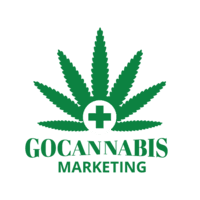
Table of contents:
- Brief Overview of the Importance of Social Media in the Cannabis Industry
- Why Measuring Performance is Crucial for Marketing Success
- KPIs (Key Performance Indicators) identification
- Measuring social media success with tools and technologies
- Pros and Cons of Each Tool with a Focus on Features Beneficial for Cannabis Businesses
- Setting Up Your Measurement Framework
- Analyzing Social Media Traffic
- Engagement metrics in brief
- Conversion tracking and ROI
- Audience analysis and segmentation
- Competitive analysis
- Best Practices for Reporting and Optimization
- Conclusion
- Call to action
In the ever-competitive cannabis industry, standing out on social media is no easy feat. Social media has become a powerful ally. Using social media to reach your goals may be a good way to achieve them, but when it comes to measuring success, how can you tell? Analyzing and measuring your social media campaigns is key to marketing success. Using this method effectively can be accomplished if we learn how.
Brief Overview of the Importance of Social Media in the Cannabis Industry
Social media marketing plays a major role in modern marketing, especially in the cannabis industry. It offers a unique platform to engage with your audience, build brand loyalty, and navigate the often restrictive advertising regulations that come with cannabis products. Social media can be a goldmine of potential customers and brand advocates when used properly.
Why Measuring Performance is Crucial for Marketing Success
Imagine throwing a party without knowing if your guests had fun. That’s what running a social media campaign without measuring performance feels like. Tracking and analyzing your campaign’s success allows you to understand what works, what doesn’t, and where to invest your resources for maximum impact. It’s all about making informed decisions to continually improve your marketing efforts.
KPIs (Key Performance Indicators) identification
In terms of social media, what are KPIs?
Social media campaigns can be evaluated with Key Performance Indicators or KPIs. Basically, they’re like scorecards for your marketing efforts, indicating whether you’re succeeding or failing. Common KPIs in social media include reach, engagement, conversions, and follower growth.
KPIs to Measure Cannabis Social Media Campaigns
There are different types of KPIs. Tracking should be guided by your business goals. For a cannabis business, this might mean focusing on engagement rates, customer sentiment, and website traffic from social media channels. Tailoring your KPIs to your specific objectives will give you a clearer picture of your campaign’s effectiveness.
Measuring social media success with tools and technologies
Overview of Popular Analytics Tools Used in the Industry
Tools are essential for measuring social media success. Here are some popular analytics tools:
- Google Analytics: Great for tracking traffic from social media to your website.
- Hootsuite: Manage, analyze, and share social media with Hootsuite.
- Sprout Social: Excellent for detailed social media reporting and engagement analysis.
- Buffer: Provides robust analytics and reporting features.
- Socialbakers: Offers advanced analytics and AI-driven insights, ideal for larger cannabis businesses with complex needs.
Pros and Cons of Each Tool with a Focus on Features Beneficial for Cannabis Businesses
- Google Analytics:
- Pros: Free detailed website traffic data.
- Cons: Steep learning curve for beginners.
- Hootsuite:
- Pros: All-in-one platform, scheduling, and analytics.
- Cons: It can be expensive for small businesses.
- Sprout Social:
- Pros: Detailed insights, user-friendly interface.
- Cons: High cost, especially for advanced features.
- Buffer:
- Pros: Easy to use, affordable.
- Cons: Limited analytics compared to competitors.
Setting Up Your Measurement Framework
How to Set Up Tracking for Specific Campaign Goals
Defining clear, measurable goals for your campaign is the first step. Increasing brand awareness, driving traffic to your website, or boosting sales? Set up tracking parameters using tools like Google Analytics once your goals are determined. To track which posts drive the most traffic and conversions, use UTM codes for your social media links.
Aligning KPIs with business goals
Your social media efforts will contribute to your overall goals if you align your KPIs with your business objectives. For example, if your objective is to increase online sales, track metrics like conversion rates and sales generated from social media. This alignment helps you stay focused and measure what truly matters.
Analyzing Social Media Traffic
How to Track and Interpret Traffic from Social Platforms
Monitoring social media traffic involves monitoring how many users visit your website via social media channels. Google Analytics provides detailed reports on social media traffic. Look for trends in which platforms are driving the most traffic and which content is most engaging for your audience.
Measuring the impact of social traffic on business metrics
Social media traffic can impact various business metrics, including sales, lead generation, and brand awareness. It is possible to identify the most effective social media strategies by analyzing this traffic and adjusting your tactics accordingly. You may need to refine your landing pages or calls-to-action if a particular post drives significant traffic but few conversions.
Engagement metrics in brief
Likes, shares, and comments are engagement metrics
Metrics such as likes, shares, and comments can be used to gauge the popularity of a piece of content. Brand loyalty and visibility often increase with high engagement rates. Recreate the post types that generate the most engagement.
Metrics for measuring campaign effectiveness
Your audience’s preferences and behaviors can be gleaned from a good engagement metric. For example, a high number of shares indicates that your content is valuable enough for followers to share with their network, expanding your reach organically. Comments and direct messages can also offer direct feedback and help you gauge customer sentiment.
Conversion tracking and ROI
Methods for Tracking Conversions from Social Media Efforts
Google Analytics and Facebook Pixel can be used to track conversions. Use these platforms to track specific actions, such as purchases, sign-ups, or downloads, directly attributed to your social media campaigns. In order to identify which platforms and strategies generate the most conversions, you must examine these data.
Calculating Return on Investment for Cannabis Social Media Campaigns
In order to calculate ROI, you need to compare the revenue generated by your social media campaigns with the costs involved. Use the formula.
ROI=(Net ProfitTotal Cost)×100 ROI=(Total CostNet Profit)×100
This calculation helps you determine the financial effectiveness of your campaigns and informs future budgeting decisions.
Audience analysis and segmentation
How to Understand and Segment Your Audience Based on Data
Customizing your content and campaigns requires an understanding of your audience. With social media analytics, you can discover your audience’s demographics, interests, and behaviors. Segment your audience based on these factors to create targeted and effective campaigns.
Tailoring future campaigns using segmentation
Delivering targeted content to specific audiences is possible through segmentation. For example, if you identify a segment interested in wellness, create content that highlights the health benefits of cannabis products. Engagement and conversion rates increase as a result of this targeted approach.
Competitive analysis
A Guide to Conducting a Competitive Analysis of Social Media
In conducting a competitive analysis, it is important to analyze your competitors’ social media strategies. Use tools like Social Blade or Sprout Social to track competitors’ performance. Find out what opportunities and threats exist by analyzing their content, engagement rates, and audience interactions.
Observing and learning from competition’s mistakes and successes
The strengths and weaknesses of your industry can be learned by studying your competitors. If a competitor’s video content consistently outperforms their other posts, consider adding more videos to your strategy. In contrast, avoid tactics that have clearly failed.
Campaign Lessons Learned
This year’s #HighOnLife campaign taught us the importance of engaging with the community and generating user-generated content. You can increase engagement and create a sense of community by getting your audience involved in your campaigns.
Best Practices for Reporting and Optimization
How to Create Meaningful Reports that Drive Decision-Making
Creating meaningful reports involves presenting data in a way that is easy to understand and actionable. Highlight key metrics using graphs and charts. To assist stakeholders in making informed decisions, include insights and recommendations. To ensure that progress is being tracked and strategies are being adjusted on a regular basis, review these reports regularly.
Tips for Optimizing Campaigns Based on Analytical Insights
Optimization is an ongoing process. Identify areas where you can improve using the data from your reports. When a specific post type doesn’t perform well, experiment with different formats or content. Maximize the effectiveness of your strategies by testing and refining them continuously.
Conclusion
Recap of Key Points:
- Social media is essential for cannabis marketing.
- Measuring performance is crucial for improving your strategies.
- Understanding KPIs and using the right tools can help you track success.
- Aligning KPIs with business goals ensures you’re measuring what matters.
Traffic analysis, engagement analysis, and conversion analysis provide valuable insights.
Audience segmentation and competitive analysis can enhance your campaigns.
Regular reporting and optimization drive continuous improvement.
Encouragement to Continuously Measure and Refine Strategies Based on Data: The key to social media success in the cannabis industry is continuous measurement and refinement. Staying ahead of your competitors and achieving your marketing goals can be achieved by regularly analyzing your performance and adapting your strategies.
Call to action
Have more questions related to Cannabis Social Media Marketing? Learn more by visiting our blog section. If you have any questions, please contact our support team at support@gocannabismarketing.com or call 1 (470) 791-9755. Our expert support team at GoCannabis Marketing is ready to assist you.




